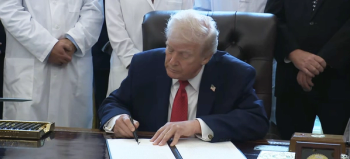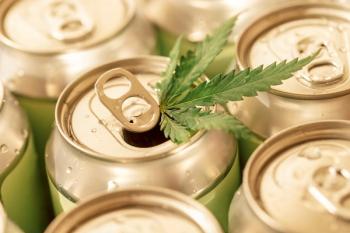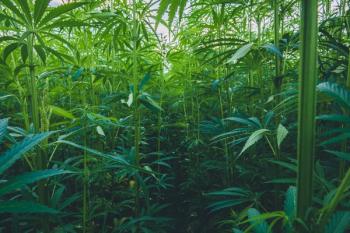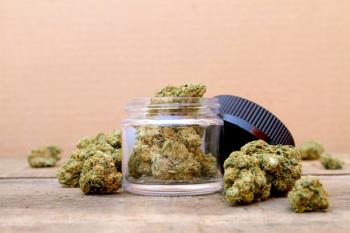
Cannabis Science and Technology
- September/October 2019
- Volume 2
- Issue 5
Hemp Testing Insanity

A number of causes of hemp testing insanity are documented such as different states using different THC measures to determine legality, lack of representative sampling, and more.
Federal law sets a strict national limit of 0.3 dry weight percent tetrahydrocannabinol (THC) for hemp to be considered legal. Here, we review concepts from earlier columns on accuracy, precision, and representative samples. Different states are using different sample methods, chromatographic techniques, different levels of THC, and some are even using total THC instead of THC. In light of what we have learned, I discuss why this is crazy and how it is unfair to hemp farmers.
The 2018 Farm Bill legalized the growing of hemp throughout the U.S. so long as the plant material contains less than 0.3% dry weight delta-9-tetrahydrocannabinol (∆9-THC) (1). In my own research, reading of state regulations, and discussions with hemp farmers, I have found that the method of collecting samples, the instrumental technique used to analyze them, and the cannabinoid reading that is being used to determine legality varies from state-to-state. This, along with the problem of inter-laboratory variation in the cannabis analysis industry, has lead to what I call “hemp testing insanity”—the dilemma hemp farmers face trying to legally grow a crop when surrounded by legal confusion.
Hemp Versus Cannabis?
The title of this magazine and this column both contain the word cannabis. So far, my attention has focused on marijuana testing, and in many people’s minds the term cannabis may only mean marijuana. Since the passage of the 2018 Farm Bill (1) the hemp acreage planted in the U.S. has exploded, and cannabidiol (CBD) seems to be on sale practically everywhere, including at Walgreens and in hamburgers at the fast food chain Carl’s Jr. (2,3). Technically, marijuana and hemp are the same plant species, it’s just that the former contains a lot of THC, and the latter very little. Therefore, it is appropriate for this magazine to publish articles about hemp testing, and for this column to address the topic of hemp analysis. Going forward, I will use the term marijuana for high THC plant material, and hemp for low THC plant material.
Review of Analytical Chemistry Concepts
I will not go into detail here, but instead point you towards previous columns of mine that have covered basic topics in analytical chemistry. The topics of error, accuracy, and precision were covered in the November 2018 edition of this column (4). Recall that precision is a measure of reproducibility, accuracy is how far you are off from the true value, and that these two metrics are not the same thing. Precision can, in general, always be determined by running the same sample over and over again and comparing results. Accuracy is not always available unless there exists a standard reference material for an analysis that can provide a legitimate true answer. I have previously lamented the lack of appropriate standard reference materials in this industry (5). Lastly, all measurements contain error, which can be comprised of systematic error, random error, or both. The source of systematic error can frequently be diagnosed and remedied (4). Random error is always with us because we cannot control all the variables in the universe when making a measurement (4).
Representative sampling is another topic I have covered (6). Simply put, in general the whole of which one is trying to analyze will not be homogeneous. It is then important to collect a representative sample of the whole, and analyze multiple aliquots and average the results to get the most representative and accurate picture of a material.
Legal Confusion
Current Federal law in the U.S. limits the amount of THC in ground, dried hemp to 0.3 wt.% (1). Presumably, this low level was set to prevent people from smoking hemp to get high. However, this legal definition is confusing in that it says nothing about tetrahydrocannabinolic acid (THCA), which is found in high quantities in marijuana. The problem is that THCA decarboxylates to THC when heat is applied to smoke the material, via the following reaction:
THCA => THC + CO2
Additionally, THCA can convert to THC at a known rate at room temperature (7). There exist marijuana strains that contain more than 20% THCA and less than 0.3% THC. A strict interpretation of the law means this material may be legally considered hemp and can be sold and transported throughout the U.S. Of course, when smoked material that contains more than 20% THCA will be highly intoxicating. I doubt it was the intention of the U.S. Congress to allow high THCA marijuana to become legal nationwide. How can a law that states a specific level of a molecule is illegal be enforced if we can’t agree on what molecules we are taking about? We can’t. This is an example of hemp testing insanity.
Because THCA converts to THC, the truest measure of the intoxicating abilities of a marijuana sample is its total available THC, which is calculated using the following equation.
Total THC = THC + (0.877)THCA [1]
In equation 1, the quantities are expressed as weight percent. The 0.877 factor accounts for the fact that THCA molecules are heavier than THC. Most third party cannabis testing laboratories report out the total THC value in addition to the individual THCA and THC readings because the total THC values are useful and important.
It is particularly important for hemp farmers to use the right measurement of THC to manage their crops. For example, imagine a farmer tests a hemp sample and it comes back 0.2% THC and 0.4% THCA. A strict interpretation of the Farm Bill would say this material is legal. However, let’s say the state government comes in, collects samples, and that upon transportation and storage some of the THCA converts to THC and the state’s test results come back 0.4% THC and 0.2% THCA. The state would consider this farmer’s crop noncompliant with the law, with the risk of it being seized and destroyed. This is an example of hemp testing insanity.
To make matters worse, different states are applying different standards to enforce the law. For example, Kentucky uses THC only (8), whereas Oregon uses total THC (9). I recently heard that New York state has switched from using total THC to THC for regulating this year’s hemp crop. This means that hemp farmers in different states are being subjected to different regulations. Thus, a crop in one state may be considered legal whereas the same crop in another state may be considered illegal. This is an example of hemp testing insanity.
HPLC Versus GC
Adding confusion to the matter is that some states, such as Oregon use high performance liquid chromatography (HPLC) (8) to measure cannabinoids in hemp, whereas other states, such as Kentucky, use gas chromatography-flame ionization detection (GC-FID) (9). HPLC measures THC and THCA separately (10), and there is no conversion from THCA to THC during the analysis. However, during GC analysis of cannabinoids, THCA breaks down to THC in the injection port and in the column (11), and what is truly measured is the total THC in the sample. If the GC analysis report says “THC” instead of “total THC,” then comparing GC and HPLC analyses on the same sample can be confusing because the two techniques are measuring different quantities but calling them the same thing!
Imagine that a hemp farmer receives HPLC THC values back from a third party laboratory that states a sample is 0.2% THC and 0.4% THCA. The farmer will interpret this as being legal based on a strict interpretation of the Farm Bill, and will not feel the need to act. However, if a state government takes the same sample, analyzes it by GC, they will report out a THC value of 0.6% because all of the THCA may be converted to THC in the gas chromatograph. The state will accuse the farmer of having a noncompliant crop, and may seize or destroy it. Similarly, the same crop would be legal in a state that uses HPLC and THC to regulate, whereas it would be illegal in a state that uses GC to regulate. These are more examples of hemp testing insanity.
Representative Sampling
Research has shown that the cannabinoid content of cannabis varies from plant to plant, and even within the same plant (10). This means that when assessing whether the hemp in a particular field is legal, a strict and formal collection procedure should be followed, as recently pointed out by Patricia Atkins in this publication (12). The upshot is this. Pulling one, or a few samples, from a hemp field and analyzing them is not representative (12). The mantra should always be the more samples analyzed the better, so that the most accurate and representative picture of a hemp grow (6) is obtained.
Even on this simple idea states cannot agree. Kentucky takes five cuttings from a plot (8) and analyzes them. My belief is that this is not enough samples, and that the number of samples collected should scale with the size of the field being sampled. Oregon takes more samples and uses a “sawtooth” sample collection pattern (13). Regardless of the merits of either approach, the fact that the two states do things differently is a problem. For identical hemp grows in different states, one may pass compliance testing and one may fail because of sampling differences and biases. This is another example of hemp testing insanity.
Chromatographic analyses of all types suffer from a representative sampling bias. Since these analyses are expensive and time consuming, the tendency is to only analyze one or a few samples from a hemp field. Of course, for an inhomogeneous material, multiple samples should be analyzed and averaged to avoid this problem (6). Spectroscopic hemp analyzers exist that are faster and easier to use than chromatographic systems, and give users the ability to more easily scan and average multiple samples from a hemp grow to obtain accurate and representative results (14).
Inter-Laboratory Variation in the Cannabis Analysis Industry
I have published and written extensively on this problem (5,15,16). In brief, the same samples submitted to different cannabis laboratories too often yield markedly different results (16). Here is the crux of the problem. Chromatographs are calibrated using solutions of pure cannabinoids, and many a laboratory is capable of producing beautiful calibration lines for these idealized samples. However, cannabis and hemp samples are prepared by extraction to produce solutions of cannabinoids. There is a huge variation in extraction method from laboratory to laboratory (16). This means different laboratories extract different amounts of cannabinoids from the same sample leading to offsets in readings across laboratories (16).
A way to solve this problem is for all laboratories to adopt an extraction technique that guarantees that all the cannabinoids in a sample are extracted, which I call “extraction to exhaustion.” The simplest way for a laboratory to test if they are getting all the cannabinoids from their samples is to take a sample, extract it over and over again using their extraction technique, and then analyze each of the extracts. Only when the level of detected cannabinoids falls below the detection limit can one say the sample has been extracted to exhaustion. If all laboratories extracted to exhaustion it would mean they should all pull the same amounts of cannabinoids from the same samples, hopefully eliminating the offsets of readings observed across laboratories. As a PhD analytical chemist with 30 years experience, for my money the best extraction and chromatographic analysis method of cannabis and hemp samples was published in 2015 in the Journal of AOAC International by Giese and colleagues (10).
The inter-laboratory variation problem hurts hemp farmers because their third party laboratory may say a crop passes, a state laboratory may say a crop fails, and then whose numbers are we to believe? Alternatively, hemp farmers with identical samples in different states may find their crop legal in one place and illegal in another because of inter-laboratory variation. This is another example of hemp testing insanity.
Unenforceable Law?
Section 1 of the 14th amendment to the United States Constitution says, ”. . . nor shall any state deprive any person of life, liberty, or property, without due process of law; nor deny to any person within its jurisdiction the equal protection of the laws.”
This has been interpreted to mean that Federal laws must be enforced fairly and equally in all states (17). At the moment, I would contend this is not the case with the 2018 Farm Bill. As has been pointed out, different states collect samples in different ways, use different analytical techniques to measure THC, and even disagree on whether total THC or THC should be the number used to regulate hemp grows. I am not a lawyer, but this sounds to me like the Farm Bill is not being enforced equally across the country.
The solution to this problem requires the states and the Federal government to sit down together and figure out a uniform sample collection method, agree on an accurate instrumental technique, and decide which cannabinoid reading they are going to use to determine hemp crop legality. It was the intention of the 2018 Farm Bill to boost the hemp growing industry in the U.S., but because of a confusing law and states interpreting it in different ways, the opposite may happen. It is time to end hemp testing insanity.
Conclusions
This column has documented a number causes of hemp testing insanity including
- whether the law meant to use THC or total THC to define hemp legality,
- different states using different THC measures to determine legality,
- lack of representative sampling,
- different states using different sampling methods,
- different states using different analytical methods, that is, HPLC versus GC, and
- the problem of inter-laboratory variation caused by differences in extraction technique.
Until our elected officials step up, rationalize and harmonize state and Federal regulations, and scientists in this industry advocate for solutions to these problems, hemp farmers will be faced with uncertainty about how and when to harvest their crops.
Addendum
As we went to press, I became aware of a website that tracks hemp regulations in all 50 states (18). At the moment, it says six states are using Δ9-THC, nine are using total THC, and the rest are up in the air. This all supports the conclusions of the article.
References:
- 115th United States Congress, Senate Bill S.2667, ”Hemp Farming Act of 2018.”
- A. LaVito, CNBC, March 27, 2019,
https://www.cnbc.com/2019/03/27/walgreens-to-sell-cbd-products-in-some-stores.html . - M. Judkis, The Washington Post, April 17, 2019,
https://www.washingtonpost.com/news/voraciously/wp/2019/04/17/carls-jr-is-rolling-out-a-cbd-burger-but-dont-get-your-hopes-too-high/?noredirect=on&utm_term=.4920aef53386 . - B.C. Smith, Cannabis Science and Technology 1(4), 12–16 (2018).
- B.C. Smith, Cannabis Science and Technology 2(3), 10–14 (2019).
- B.C. Smith, Cannabis Science and Technology 2(1), 14–19 (2019).
- B.C. Smith, Terpenes and Testing Nov.–Dec., 48 (2017).
- Kentucky Dept. of Agriculture, Hemp Program Procedures for Sampling, THC Testing, and Post-Testing Actions, SOP# KDA-HEMP-20190204-1, February 4, 2019.
- Oregon Health AuthorityPublic Health Division - Chapter 333, Marijuana Labeling, Concentration Limits, and Testing.
- M.W. Giese, M.A. Lewis, L. Giese, and K.M. Smith, J. AOAC Int. 98(6), 1503 (2015).
- T. Ruppel and M. Kuffel, “Cannabis Analysis: Potency Testing Identification and Quantification of THC and CBD by GC/FID and GC/MS,” PerkinElmer Application Note (2013).
- P. Atkins, Cannabis Science and Technology 2(2), 26–34 (2019).
https://www.oregon.gov/ODA/shared/Documents/Publications/NurseryChristmasTree/SamplingProtocol.pdf .- B.C. Smith, “Quantitation of Cannabinoids in Hemp by Mid-Infrared Spectroscopy,” Cannabis Science and Technology, manuscript submitted.
- B.C. Smith, Cannabis Science and Technology 2(2), 12–17 (2019).
- B.C. Smith, P. Lessard, and R. Pearson, Cannabis Science and Technology 2(1), 48–53 (2019).
https://en.wikipedia.org/wiki/Equal_Protection_Clause .https://docs.google.com/spreadsheets/d/1x8doatlR6w1W3W6hA0hlu67qwe9uOSfYoHe3vjcYs6Y/edit#gid=855723386 .
Brian C. Smith, PhD, is Founder, CEO, and Chief Technical Officer of Big Sur Scientific in Capitola, California. Dr. Smith has more than 40 years of experience as an industrial analytical chemist having worked for such companies as Xeros, IBM, Waters Associates, and Princeton Instruments. For 20 years he ran Spectros Associates, an analytical chemistry training and consulting firm where he improved their chemical analyses. Dr. Smith has written three books on infrared spectroscopy, and earned a PhD in physical chemistry from Dartmouth College.
How to Cite This Article
B.C. Smith, Cannabis Science and Technology2(5), 10-13 (2019).
Articles in this issue
about 6 years ago
Using Gas Chromatography for Accurate Terpene Analysis in Cannabisabout 6 years ago
Quality Control in the World of Cannabisabout 6 years ago
Medical Cannabis for Analgesia: Growth and Developmentabout 6 years ago
Is Your Cannabis Testing Laboratory Ready for ISO/IEC 17025:2017?Newsletter
Unlock the latest breakthroughs in cannabis science—subscribe now to get expert insights, research, and industry updates delivered to your inbox.




